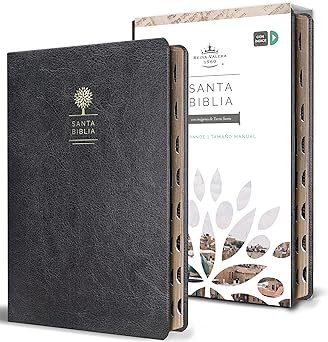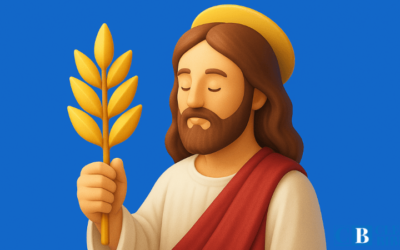Is it possible for a single book to have more than 40 authors and still retain a coherent message?
The Bible is a unique case in the history of literature: written by kings, fishermen, prophets, and doctors over more than a thousand years, yet with a surprising unity.
Discover who the authors behind its pages were and why it matters to your faith today.
Introduction to the mystery of the biblical authors
To better understand the depth, unity, and richness of the Bible, it is important to analyze who participated in its writing.
Here we explore why knowing the authors of the Bible is key to understanding its origin, purpose, and message.
1. Was the Bible written by one person or by many?
The Bible is not a single book with a single author, but a collection of books composed over more than a thousand years.
It was written by dozens of people in different eras, cultures and historical contexts.
Despite this diversity, its message presents a surprising coherence that points to a higher source of inspiration.
Each author contributed their style, experience and context:
From shepherds like Amos, to doctors like Luke, to kings like David, the variety of writers reflects the plurality of God's people.
2. Why is it important to know the authors of the Bible?
Understanding who the human authors of the Bible were helps us better interpret their writings.
Knowing their cultural background, their craft, their intention, and their audience allows for more precise reading and deeper interpretation.
For example:
Knowing that Paul wrote many of his letters from prison adds emotional and spiritual weight to reading his exhortations on faith and perseverance.
In addition, it helps to identify the differences between historical, poetic, prophetic or epistolary literature, depending on the author's profile.
3. Divine inspiration and human participation
Christian doctrine affirms that the Bible is inspired by God, but not dictated word for word like an automatic message.
God used human authors with their own personalities, talents, and styles to communicate his eternal revelation.
This is known as theopneustic inspiration:
A work completely divine in its origin, but transmitted through human instruments.
Therefore, by studying the authors of the Bible, we are approaching not only history, but also the mystery of how God works through human beings to transmit his truth to humanity.
What do we mean by “author” in the Bible?
The word “author” in the biblical context does not always have the same meaning as in modern literature.
In the Bible, authorship can be direct, shared, delegated, or even traditionally attributed by generations.
Here we analyze what is considered authorship in Scripture and how it is understood from the perspective of faith and history.
1. Human author vs. divine author
From a theological perspective, the Bible has two levels of authorship:
- God as the supreme author and inspirer of the content
- Human beings as active instruments that wrote, compiled or transmitted the text
Divine Author:
God is the ultimate source of the message.
According to 2 Timothy 3:16, “All Scripture is inspired by God.”
Human author:
The biblical writers wrote in their own words, using their own language, culture, and perspective, but guided by the Holy Spirit.
That's why their styles vary and reflect their context.
This duality does not weaken the authority of the text, but rather enriches it with a human dimension and divine fidelity.
2. Writing by dictation, inspiration or compilation
The Bible was written in a variety of ways, depending on the book, the context, and the author involved.
These are the main ways in which the texts originated:
Divine dictation:
In some cases, God directly instructed what was to be written (e.g., the Ten Commandments or specific prophecies).
Guided inspiration:
Most of the books were written under the guidance of the Holy Spirit, allowing the author to use his or her own style and vocabulary.
Compilation and editing:
Various texts, such as the Psalms or Proverbs, were compiled by generations and edited under prophetic or priestly supervision.
This also applies to historical books and some letters.
3. The role of the scribes and disciples in the process
Many biblical authors were assisted by scribes, secretaries, or disciples who recorded, organized, or copied their writings.
This was a common and recognized process in ancient times.
Scribes as scribes:
For example, Jeremiah dictated his words to Baruch, his scribe (Jeremiah 36:4).
Paul also mentions Tertius as the one who wrote his letter to the Romans (Romans 16:22).
Disciples who compiled teachings:
Gospels like Mark are based on direct testimony from apostles, especially Peter.
This indicates that authorship can also be indirect but authentic.
This collaborative work does not invalidate authorship, but rather demonstrates the fidelity of the process of transmitting and preserving the sacred message.
Total number of authors of the Bible
The Bible is a collection of 66 books (or 73 in the Catholic canon) composed over more than a thousand years.
Throughout this time, multiple authors were used by God to communicate His revelation.
Next, we explore how many writers identify themselves, who they are, and what happens to those anonymous texts.
1. How many recognized authors does the Bible have?
Although there is no exact and infallible number, scholars generally estimate between 35 and 40 different authors throughout the entire Bible.
This number includes authors with direct attributions and some whose authorship is accepted by tradition.
The books of the Old Testament were written by prophets, leaders, kings, and sages.
Those of the New Testament by apostles, evangelists and collaborators of the first century.
Despite differences in period, origin, and style, they all point to the same central message: God's plan of redemption.
2. Estimated list of known authors by name
Among the most prominent and well-known authors by name, we find:
- Moses: Genesis to Deuteronomy
- David: Psalms
- Solomon: Proverbs, Ecclesiastes, Song of Songs
- Isaiah, Jeremiah, Ezekiel, Daniel: prophetic books
- Ezra and Nehemiah: historical books
- Matthew, Mark, Luke, John: Gospels
- Pablo: Romans to Philemon (13 letters)
- Peter, James, Judas: General Epistles
- Juan: Gospel, 3 Epistles and Revelation
Many books bear the name of their author, although in other cases the attribution comes from tradition.
3. Anonymous authors and texts without clear attribution
Some books do not explicitly mention their author, and their authorship has been debated for centuries.
These are examples of anonymous texts or of uncertain authorship:
- Hebrews: Its author is not known with certainty; Paul, Apollos, or Barnabas have been suggested.
- Job: Its author is unknown; some attribute it to Moses or a later sage.
- Judges, Kings, Chronicles: attributed to anonymous compilers or scribes.
Despite their lack of names, these books were recognized for their inspiration and theological coherence, and accepted as part of the canon for their revelatory content.
Authors of the Old Testament
The Old Testament was written over a period of more than a thousand years by different authors who lived in diverse cultural and geographical contexts.
Below, we explore who its main writers were, what books they wrote, and what their role was in the history of revelation.
1. Moses and the first five books (the Pentateuch)
Traditionally, Moses is recognized as the author of the Pentateuch: Genesis, Exodus, Leviticus, Numbers, and Deuteronomy.
These books form the basis of the Old Testament and Hebrew law.
Moses as legislator and prophet:
He was the leader chosen by God to free Israel from Egypt and receive the Ten Commandments at Sinai.
According to the same biblical text, he wrote what God commanded him (Exodus 24:4).
Contents of the Pentateuch:
Genesis recounts the origins; Exodus, the liberation; Leviticus, the laws; Numbers, the pilgrimage; and Deuteronomy is a final review.
Although it is acknowledged that there may have been later editions (such as the account of his death in Deuteronomy 34), the primary authorship is attributed to Moses.
2. Kings, prophets and priests as writers
Many of the historical and prophetic books of the Old Testament were written by political and religious leaders of the people of Israel.
Ezra and Nehemiah:
Priests and scribes who wrote about the return from exile and the rebuilding of Jerusalem.
Samuel and the books of Kings and Chronicles:
Jewish tradition attributes the authorship or compilation of these books to prophets such as Samuel and scribes of the royal court.
Spiritual and political responsibility:
These authors not only narrated events, but also interpreted them in light of the people's fidelity or infidelity toward God.
3. Writers of poetic and wisdom books
Poetic books (such as Psalms) and wisdom books (such as Proverbs and Ecclesiastes) were written by different authors over time.
David:
Principal author of the Psalms. He composed hymns and prayers based on his personal experience as a shepherd, king, and worshiper.
Solomon:
He wrote most of Proverbs, Ecclesiastes, and the Song of Songs. His wisdom was recognized by all the peoples of his time (1 Kings 4:30).
Other authors of the Psalms:
They include Asaph, the sons of Korah, Heman, and Ethan. This shows a choral collaboration in Israel's worship.
4. The Major and Minor Prophets: 16 Key Authors
The prophets of the Old Testament conveyed God's message to Israel in times of moral, spiritual, and political crisis.
Major Prophets (by content length):
Isaiah, Jeremiah, Ezekiel and Daniel.
They wrote in contexts of exile, judgment, and messianic hope.
Minor Prophets (12 shorter books):
They include Hosea, Joel, Amos, Obadiah, Jonah, Micah, Nahum, Habakkuk, Zephaniah, Haggai, Zechariah, and Malachi.
Each one addressed specific topics with a strong prophetic and eschatological charge.
New Testament Authors
The New Testament was written in the 1st century AD by direct or close witnesses of the life, death, and resurrection of Jesus Christ.
These authors, inspired by the Holy Spirit, wrote the Gospels, pastoral letters, and prophetic writings to strengthen the early Church.
1. The four evangelists: Matthew, Mark, Luke and John
Matthew:
Apostle and former tax collector. His gospel is addressed to a Jewish audience and emphasizes Jesus as the promised Messiah.
Marcos:
A disciple of Peter, his Gospel is the shortest and most dynamic, probably the first written, addressed to Roman believers.
Luke:
Physician and companion of Paul. He is the author of both the Gospel of Luke and the Book of Acts. He is the only identified Gentile author.
Juan:
“The Beloved Disciple.” His gospel is theological, with an emphasis on the divinity of Christ and the new spiritual birth.
2. The Apostle Paul and his 13 epistles
Paul wrote most of the books of the New Testament.
His letters were addressed to churches and leaders to strengthen doctrine and guide Christian living.
Recognized Pauline Letters:
Romans, 1 and 2 Corinthians, Galatians, Ephesians, Philippians, Colossians, 1 and 2 Thessalonians, 1 and 2 Timothy, Titus and Philemon.
Paul's Key Themes:
Justification by faith, grace, the body of Christ, the unity of the Church, and the coming of the Lord.
3. Peter, James, Jude and other apostolic writers
Peter:
Apostle of Jesus. He wrote two epistles that encouraged believers in the midst of persecution.
Santiago:
Brother of Jesus and leader of the church in Jerusalem. His letter emphasizes active faith and practical righteousness.
Judas:
Also the brother of Jesus, his brief letter warns against false teachers and apostasy.
Juan:
In addition to the gospel, he wrote three epistles dealing with love, truth, and warning against antichrists.
4. The special case of the author of Hebrews
The Letter to the Hebrews does not mention its author directly.
For centuries it has been attributed to Paul, although the style and vocabulary differ from his other letters.
Other authorship proposals:
Apollos, Barnabas, Luke or even Priscilla, according to some scholars.
Content and focus:
It exposes the superiority of Christ over the Levitical system, presenting him as the eternal high priest.
Its theological depth and intensive use of the Old Testament make it one of the most complex and influential texts of the New Testament.
Books written by multiple people or generations
Not all the books of the Bible were written by a single author.
Some texts were the result of collaborations, compilations, or editions that developed over time.
Here we analyze the main examples of books whose authorship was shared by several people or generations.
1. The Psalms: of David, Asaph, the sons of Korah, etc.
The Book of Psalms is a collection of 150 poetic compositions used for praise, prayer, and meditation.
Although David He is the main author, there are many other contributors who enriched the Psalter with their own spiritual experiences.
Diversity of authors in the Psalms:
- David: attributed at least 73 psalms
- Asaph: 12 Psalms
- The sons of Korah: 11 psalms
- Heman and Ethan: authors of some unique psalms
- Solomon and Moses: They also appear as authors of certain psalms (Psalm 72 and Psalm 90 respectively)
- Anonymous Psalms: About a third has no identified author
Liturgical and community importance:
The Psalms were used by various generations as a manual of worship, which allowed for their expansion and collective enrichment.
2. Proverbs and Ecclesiastes: Only Solomon?
Although tradition attributes these books to Solomon, the structure and headings of the texts indicate the participation of other wise men.
This suggests a process of compilation by several hands over time.
In the book of Proverbs:
- Proverbs 1–24: attributed to Solomon
- Proverbs 25–29: compiled by Hezekiah's men, centuries later
- Proverbs 30 and 31: attributed to Agur and King Lemuel
Ecclesiastes:
Although attributed to “the Preacher, son of David,” many scholars debate whether it was written entirely by Solomon or whether it is a later work that adopts his voice.
3. The Book of Isaiah: One or Several Authors?
Isaiah is one of the longest and most complex prophetic books of the Old Testament.
Tradition attributes the entire content to the prophet Isaiah, but critical studies suggest that there may be multiple authors.
Division suggested by scholars:
- Isaiah 1–39: written by the prophet Isaiah in the 8th century BC
- Isaiah 40–55 (Deutero-Isaiah): possibly written during the Babylonian exile
- Isaiah 56–66 (Trito-Isaiah): texts of the post-exilic restoration
Reasons for this division:
- Changes in tone, vocabulary and historical context
- References to events that occurred long after Isaiah's lifetime
Still, the overall message remains consistent in its approach: judgment, hope, and redemption.
Women as possible authors in the Bible
Although most biblical books were written by men, there are instances where women actively participated as composers of songs, hymn writers, and transmitters of divine messages.
In this section, we explore examples of women whose words were recorded and preserved in sacred text.
1. Deborah and the Song of Judges
Deborah She was a prophetess and judge in Israel who led the people in times of oppression (Judges 4–5).
After the military victory against Sisera, he composed a poetic song with Barak.
Characteristics of the Song of Deborah:
- One of the oldest poems in the Bible
- Celebrate the power of God and the courage of faithful leaders
- Highlights the female role, such as that of Jael, who defeated the enemy
This chant is an early example of female authorship and spiritual witness.
2. The Case of Mary and Other New Testament Hymns
In the New Testament, we find poetic compositions attributed to women that reflect deep faith and theological knowledge.
Mary, the mother of Jesus:
He composed the Magnificat (Luke 1:46–55), a praise to God for his faithfulness and justice.
It is one of the most powerful pieces of spiritual and social exaltation.
The Song of Elizabeth (Luke 1:42–45) and that of Anna the prophetess (Luke 2:36–38) They also reveal that women had a voice in the prophetic proclamation.
3. Why are there no books signed by women?
There are several historical, cultural, and religious reasons why we do not find biblical books officially signed by women.
Cultural factors:
- In the patriarchal societies of the ancient Middle East, women did not usually perform official literary or legislative functions.
- Access to formal education and public roles was largely reserved for men.
Indirect recognition:
Although they did not sign entire books, the content that emerged from women was included, transmitted, and venerated in the canon.
This indicates that their role was significant, although not always visible.
Spiritual value not limited to the author:
God used both men and women to fulfill his purpose, and many female voices were channels of revelation, even if they are not listed as the official authors of a book.
What characteristics do the biblical authors share?
Although the authors of the Bible were very different from each other in terms of time, occupation, and social status, they share certain fundamental traits that make them unique as spokespersons for divine revelation.
Next, we explore the common elements that link them as instruments used by God.
1. Cultural context and educational level
The biblical authors lived in different regions, from Mesopotamia to Rome, and wrote in diverse contexts such as Egypt during the Exodus, monarchical Israel, the Babylonian exile, and the Roman Empire.
Despite these differences, they all shared a deep understanding of their surroundings and a direct connection to their people.
Variety of educational levels:
- Some highly trained, such as Moses (educated at the court of Egypt), Solomon (wise man and philosopher), or Luke (physician and meticulous chronicler)
- Others with humble backgrounds, like Amos (shepherd of sheep), Peter (fisherman) or John (without formal training)
The biblical message does not depend on academic sophistication, but on obedience to divine calling.
2. Professions: shepherds, fishermen, kings, doctors
The biblical authors came from diverse backgrounds, which adds richness to the stories and depth to the illustrations used.
Examples of trades represented:
- Pastors: Moses, David, Amos
- Fishermen: Peter, Andrew, John
- Kings: David, Solomon
- Doctor: Luke
- Priests: Jeremiah, Ezekiel
- Scribes and prophets: Ezra, Isaiah, Malachi
- Tax collectors and converted Pharisees: Matthew, Paul
Each one wrote from their life experience, connecting with the reality of the people they served.
3. Testimonies of faith and obedience to God
Beyond their profession or social level, all the biblical authors were people committed to God and obedient to his call.
Common features:
- They were chosen by God, not by personal merit
- They responded with obedience, even in the midst of opposition, persecution, or difficulty.
- His message was centered on fidelity to God, justice, repentance and hope.
Most suffered because of the message they shared, but they remained faithful because they believed it was God's word for their generation.
Biblical authors and their spiritual experience
The biblical authors wrote not only from their human knowledge, but from profound spiritual experiences that marked their lives.
In this section, we explore how these experiences gave rise to the sacred texts and reveal the active role of the Holy Spirit in the process.
1. Encounters with God as the basis of the written message
Many of the biblical writers began their work after a direct experience with God.
These transformative encounters were the starting point of his prophetic or apostolic ministry.
Key examples:
- Moses: Call from the Burning Bush (Exodus 3)
- Isaiah: He had a vision of the throne of God in the temple (Isaiah 6)
- Pablo: He found Christ on the road to Damascus (Acts 9)
These experiences not only changed their lives, but also gave authority to their writings.
2. Revelation, dreams, visions and prophecies
God used multiple forms of communication to reveal his word to the biblical writers.
These forms included the supernatural, the symbolic, and the direct.
Forms of revelation used:
- Prophetic dreams: like those of Joseph in Egypt or Daniel in Babylon
- Heavenly visions: like those of Ezekiel, Zechariah or John in Revelation
- Direct Word of God: “Thus says the Lord” is a formula repeated in the prophetic books
Each form revealed a part of God's character and will for his people.
3. The Holy Spirit as a source of inspiration
The Holy Spirit was the divine agent who guided the biblical authors to write what God intended, without error in their message.
Doctrinal basis:
2 Peter 1:21 states that “holy men of God spoke as they were moved by the Holy Spirit.”
Impact of the Spirit on the writing process:
- Guided in the choice of words and topics
- He remembered teachings, as in the case of the evangelists (John 14:26)
- He confirmed the truth of the message even in difficult situations or persecution.
Scripture is not a product of human will, but the result of divine intervention through people sensitive to the voice of God.
The process of compilation and canonization
The Bible we know today was not delivered in its final form from the beginning.
It was formed through a long and careful process that included the selection, compilation, and validation of texts considered inspired.
Here we explain how the books of the biblical canon were defined and who participated in these decisions.
1. Who decided which books were included in the Bible?
The decision about which books would be part of the Bible was not made by a single person or in a single event.
It was a progressive process in which spiritual authority, doctrinal authenticity, and the widespread use of the texts were considered.
Criteria used to determine which books were canonical:
- Antiquity and apostolic or prophetic authorship
- Doctrinal concordance with existing revelation
- Liturgical use in Jewish churches or communities
- Internal testimony of the Holy Spirit
This process took centuries and was driven by the need to preserve correct teaching in the face of heresy or dubious writings.
2. Participation of communities, rabbis and councils
The formation of the canon was the result of the collective discernment of the people of God, not an external imposition.
In Judaism:
- The rabbis and scribes recognized the books of the Tanakh as Scripture, especially after the exile.
- The Council of Jamnia (late 1st century AD) helped consolidate the Hebrew canon, although it already existed largely informally.
In Christianity:
- The early churches used the Gospels, apostolic letters, and prophetic texts from the first century.
- The Council of Hippo (393 AD) and the Council of Carthage (397 AD) ratified the New Testament canon as we know it today.
- The Catholic Church also included the deuterocanonical books at the Council of Trent (16th century).
These meetings did not create the canon, but rather formally recognized texts that were already accepted by the majority of communities.
3. How authorship influenced the acceptance of the text
Authorship was one of the most relevant elements when evaluating a book as inspired.
Having an author recognized for his closeness to God (prophet, apostle, direct witness) was almost indispensable.
Concrete examples:
- Apostolic Letters: They were accepted because they were written by Paul, Peter, John, etc.
- Rejection of apocryphal writings: Many texts were excluded from the canon because their authors were not legitimate or their doctrines were erroneous.
- Debates like Hebrews or Revelation: Although there were doubts at first, they were accepted for their theological quality and the testimony of the Spirit.
The authority of the author gave believers confidence that the content was truly of divine origin.
Book recommendations for further study
If you'd like to explore more about biblical authorship and how the Bible was formed, these books available on Amazon are excellent resources:
📘 Who wrote the Bible? – Richard Elliott Friedman
A rigorous analysis of the origins of the Old Testament, written in a clear and provocative manner.
📙 The Authors of the Bible and Their Historical Context – John Barton
Explain how the cultural and political environment influenced the way sacred texts were written.
📗 How the Bible Was Made – Henry H. Halley
A historical and theological introduction to the formation of the biblical canon, ideal for Christian readers.
This is only for Christian entrepreneurs committed to their faith.
If you are an entrepreneur or business owner looking to grow with integrity and without compromising their faith, this section is for you:
🚀 Launch your website or digital project with excellence.
Explore NippyLaunch.com, the platform created for Christian entrepreneurs who want professional solutions without depending on the world.
📈 Increase your sales with biblical principles.
Discover CleefCompany.com, where we design digital advertising strategies aligned with Christian values.
🧮 Manage your resources wisely.
Visit CalculatorCCH.com and access more than 600 free tools for finance, productivity, and decision-making, designed specifically for those who want to be good stewards.
Frequently Asked Questions About the Authors of the Bible
How many authors does the Bible have in total?
It is estimated that between 35 and 40 people wrote the books of the Bible.
This issue includes both authors mentioned by name and those traditionally recognized by the religious community.
Who wrote the first book of the Bible?
Tradition attributes to Moses the authorship of the book of Genesis.
Although he did not witness the events narrated, it is believed that he received them through divine revelation or oral tradition.
Is it true that Paul wrote more books than any other author?
Yes. Paul wrote at least 13 New Testament letters, making him the author with the most books in the Bible.
His epistles cover doctrinal, pastoral, and practical topics for the churches.
Who wrote the book of Hebrews if its author is unknown?
The author of Hebrews remains anonymous.
Several names have been proposed, such as Paul, Apollos, Barnabas, or even Priscilla, but there is no definitive consensus.
Were all authors prophets or apostles?
No. Some were kings (David, Solomon), shepherds (Amos), doctors (Luke), scribes (Ezra) or fishermen (Peter).
The important thing was that everyone was inspired by God to write.
Are there women authors in the Bible?
There are no books signed by women, but there are songs, prayers, and prophecies composed by them.
Notable examples are Deborah, Mary (the Magnificat) and Anna the prophetess.
Did Moses really write the Pentateuch?
Most Jewish and Christian tradition attributes the authorship of the Pentateuch to Moses.
However, some modern scholars suggest that these texts were edited and compiled later.
Which books were written by more than one author?
Books such as Psalms, Proverbs, and Isaiah show evidence of multiple authors or editors over time.
This does not contradict its inspiration, but rather reflects its collective and progressive character.
What does it mean that the Bible was inspired by God?
It means that although it was written by humans, its content comes from God.
The Holy Spirit guided the authors to communicate divine truth without error in their purpose.
How was the authorship of each book in the canon confirmed?
Several criteria were used: apostolic or prophetic author, acceptance by faith communities, doctrinal consistency, and liturgical use.
Authorship was important, but not the only factor in defining inclusion in the Bible.
Conclusion
Knowing the authors of the Bible connects us to the humanity of Scripture and to the God who spoke through each of them.
From Moses to John, every writer was an instrument in the hands of the Holy Spirit to communicate an eternal message.
And now, it's your turn:
Which biblical author has most impacted your life and why?
Leave us your comment and share your experience with the Word of God!
Discover How the Bible Can Transform Your Life
- Bible Study – explore the teachings of the Bible and find answers to life’s challenges.
- Fundamental Beliefs – delves into the principles that have guided millions through the centuries.
- Spiritual Growth – Strengthen your faith with studies designed to bring you closer to God.

Discover How the Bible Can Transform Your Life
- Bible Study – explore the teachings of the Bible and find answers to life’s challenges.
- Fundamental Beliefs – delves into the principles that have guided millions through the centuries.
- Spiritual Growth – Strengthen your faith with studies designed to bring you closer to God.



























0 Comments